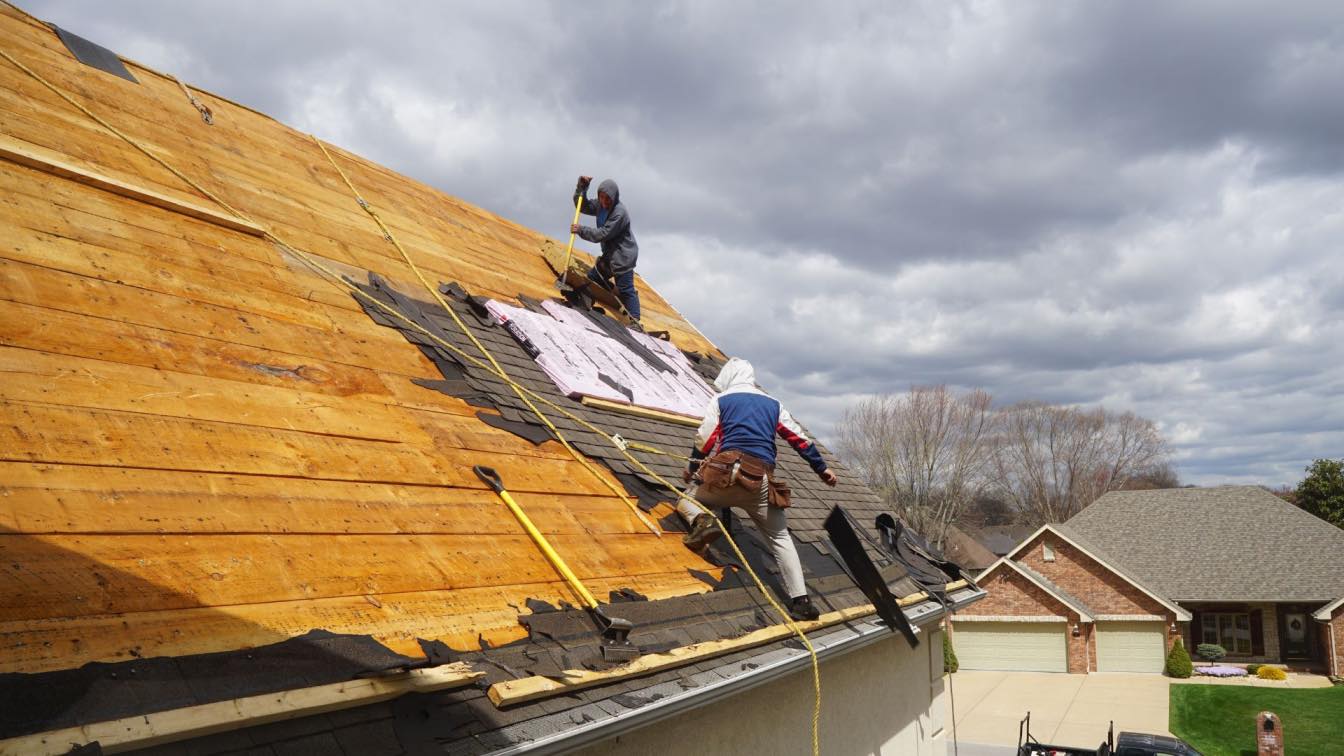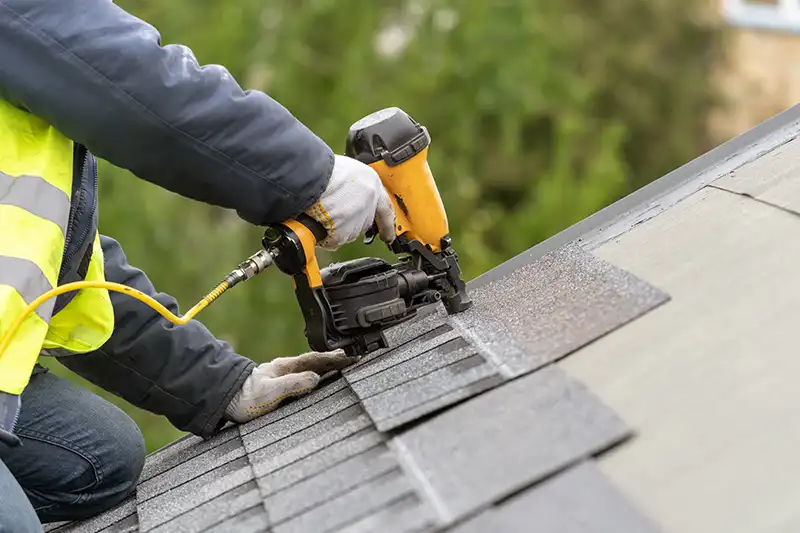A Comprehensive Guide to Effective Roofing Apartment Roofing Installation
The intricacies of level roof covering installment demand a meticulous technique, starting with a thorough understanding of different level roofing system types and the vital materials required for ideal efficiency. An effective installation hinges not only on the choice of products yet additionally on the preparation and implementation of each action entailed in the procedure. As we explore the critical points from preparation to maintenance, it becomes evident that forgeting also small details can dramatically affect the roofing system's durability and effectiveness. What details techniques can guarantee a seamless installment that withstands the test of time?
Recognizing Apartment Roof Covering Kind
When taking into consideration level roof coverings, it is important to recognize the different kinds readily available, as each deals distinctive benefits and drawbacks tailored to details needs. The most common types of flat roofings include Built-Up Roof (BUR), Changed Asphalt, and Single-Ply membrane layers.
Built-Up Roof covering contains several layers of asphalt and crushed rock, providing exceptional longevity and climate resistance. It is particularly useful in locations prone to extreme climate condition but may need more upkeep because of its complex building and construction.
Changed Asphalt is a prominent option for its simplicity of installation and versatility. It frequently employs a torch-applied or self-adhesive approach, which can be beneficial for quick repair work and lasting performance. Its life-span can be shorter contrasted to BUR.
Single-Ply membranes, consisting of Thermoplastic Olefin (TPO) and Ethylene Propylene Diene Monomer (EPDM), are recognized for their light-weight nature and energy effectiveness. These materials are typically favored for business structures as a result of their cost-effectiveness and convenience of installation (Cleveland Roofing Specialists). Nevertheless, they may not give the same level of insulation as other alternatives.
Each roofing kind needs careful consideration based on environment, budget plan, and specific job requirements.
Important Materials for Apartment Roof
A range of essential products are vital for the effective installment of level roof covering systems. The option of products directly effects durability, performance, and general efficiency.
Among the primary materials is the roof covering membrane, which can be created from numerous substances such as thermoplastic polyolefin (TPO), ethylene propylene diene monomer (EPDM), or PVC. Each type supplies unique benefits, consisting of UV resistance and flexibility, which are important for prolonged performance.
In addition to the membrane layer, insulation materials play a significant role in energy efficiency. Stiff foam boards or polyisocyanurate insulation are prominent choices, as they supply exceptional thermal resistance and moisture management.
In addition, roof covering adhesives and sealants are crucial for guaranteeing a water tight setup. These products need to be compatible with the selected membrane to avoid deterioration in time.
Getting Ready For Installation
Correct preparation is important for a successful level roof covering setup, as it prepares for a reliable and resilient roof. Begin by carrying out a comprehensive examination of the existing roof structure. Look for indicators of damage, including leakages, rot, or insufficient drainage, which can compromise the brand-new roof. Ensure that the hidden products are audio and can sustain the weight of the new roofing components.
Next, collect all required devices and materials, ensuring that they meet industry requirements. This consists of waterproof membrane layers, insulation, blinking, and bolts. Familiarize on your own with the producer's specifications, as adherence to these guidelines is essential for warranty functions.
In addition, guarantee that the job area is clear of particles and obstructions to facilitate effective and safe setup. Consider weather; stay clear of installment during hefty rainfall or extreme temperature levels, which can impact material performance. Lastly, inform any type of passengers of the building regarding the forthcoming job to ensure safety and security and decrease disruptions. By taking these preparatory actions, you can improve the probability of a successful flat roof installment that meets both structural and aesthetic demands.
Step-by-Step Setup Refine
With the foundation developed via thorough prep work, the following stage entails performing the flat roofing installment methodically. This action is important for preserving the roof covering's stability over time.
Complying with the vapor barrier setup, put down insulation boards, ensuring they fit tightly with each other to reduce thermal connecting. Secure the insulation with suitable fasteners based upon the roof kind and local building ordinance. As soon as the insulation remains in area, it's time to use the roof membrane. Depending upon the picked product-- such as TPO, EPDM, or modified asphalts-- install the membrane according to the manufacturer's requirements.
Guarantee proper overlap at joints and sides to create a leak-proof seal. Utilize adhesives, mechanical bolts, or heat welding as required. Finally, set up flashing around boundaries, vents, and click this link any type of roofing penetrations to boost waterproofing. After installment, perform a comprehensive inspection to determine any kind of possible problems prior to wrapping up the task, making certain a trusted and robust flat roof system.
Upkeep Tips for Durability
Routine upkeep is essential to make certain the longevity and performance of a flat roof covering. Among the key jobs is to conduct regular inspections Extra resources a minimum of two times a year, ideally in springtime and loss. Throughout these evaluations, seek indications of wear, such as blisters, splits, or merging water, which can show underlying issues.

Ensuring correct drain is critical to stop water buildup. Inspect and clear rain gutters, downspouts, and scuppers to guarantee unobstructed water circulation. Additionally, evaluate seals around vents, skylights, and various other penetrations for any indications of damage, using caulk or sealer as required to keep a watertight barrier.
Lastly, think about professional upkeep solutions every few years for complete maintenances. By sticking to these maintenance suggestions, you can dramatically expand the life of your flat roofing, ensuring it stays a dependable guard against this hyperlink the elements.
Final Thought
Effective flat roofing system installment demands an organized approach encompassing detailed evaluations, product choice, and thorough preparation. Sticking to the laid out actions during the installation process makes sure the appropriate application of roofing membranes and insulation while enhancing waterproofing with efficient flashing installation.
The complexities of level roofing system setup demand a meticulous approach, beginning with an extensive understanding of various flat roofing kinds and the important products needed for optimal efficiency.Proper prep work is crucial for a successful level roof setup, as it lays the groundwork for a resilient and effective roof covering system. After installation, conduct a detailed examination to recognize any type of prospective concerns before ending the task, making sure a trusted and robust level roofing system.
